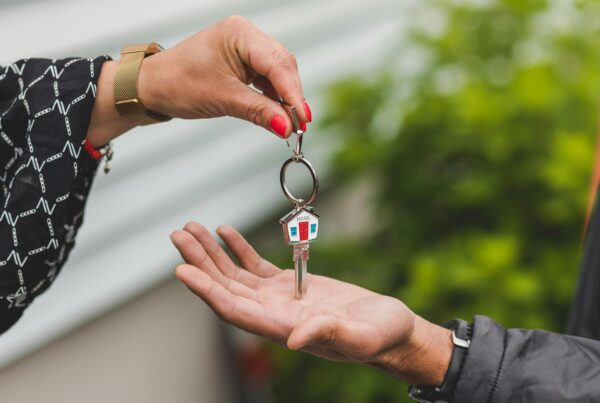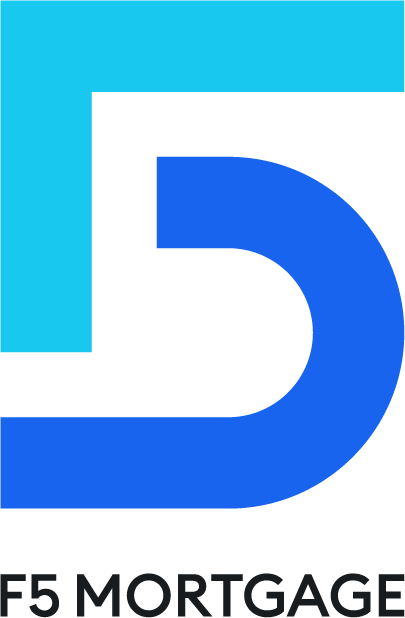One of the most exciting aspects of owning a home is planning and executing various home improvement projects. As long as you abide by local building codes and any relevant Homeowner’s Association rules, you have the freedom to upgrade your property for increased functionality, aesthetic appeal, and value.
These projects cost money, and although they are an investment in the property’s value, funding them can be challenging. Fortunately, home improvement loans are an option to provide the money you need to pay for materials and labor costs.
There are several types of home improvement loans that you can apply for to finance your renovation ideas. Knowing how home improvement loans work can help you choose the best payment plan for both your home improvement plans and your wallet. This guide will walk you through various types of home improvement loans to take your home to the next level.
1. Home Equity Loans (HELOANs)
Home equity loans are frequently used by homeowners to pay for renovations. They allow the owner to borrow against the equity they have built up based on the difference between the property’s value and the remaining principal loan amount.
For example, if your entire loan amount is $80,000 in principal but the property is valued at $120,000, you could take out a home equity loan, also known as a second mortgage, and take the majority of that $40,000 difference in cash for home and renovation costs. This option is solid for those with enough home equity and living in good real estate market conditions.
2. Home Equity Lines of Credit (HELOCs)
A home equity loan is often confused with a home equity line of credit (HELOC). One is a loan that comes as a lump sum payment, while the other is a revolving line of credit you can borrow against up to the credit limit. With a home equity line of credit, you borrow against the home’s equity and use the house as collateral to secure the cash.
There is typically a set draw period, often ten years, from which you can continuously borrow and repay from that line or credit, followed by a longer repayment period. It operates similarly to a credit card.
While this strategy has tax benefits (such as deductions on interest rates), there is a limit to how much you can borrow, and variable interest rates can make your monthly payments unpredictable.
3. Cash-Out Refinancing
A cash-out refinance works similarly to a home equity loan. However, cash-out refinancing replaces your current mortgage with a new loan and a new loan term, allowing you to obtain cash from the difference between your principal loan amount and actual property value. On the other hand, a home equity loan is a second mortgage that is separate from the original mortgage.
A cash-out refinance often has lower interest rates than a home equity loan, but if you are unsure about your refinancing prospects, you can reference this refinance guide.
4. FHA 203(k) Rehab Loans
FHA loans are typical mortgages insured by the Federal Housing Administration (FHA). The Federal Housing Administration gives FHA loans to lower-income buyers or those with credit scores that are too low for conventional loans.
However, you can also use certain FHA financing solutions for home renovation, such as the FHA 203(k) rehab loan. An FHA 203(k) rehab loan can help you avoid double closing costs and interest rates by allowing you to finance (or refinance) the costs of your home and renovation into one loan term instead of two. You can apply for this loan program if your home is at least a year old and you plan to refinance and take out cash for these renovations.
5. Unsecured Personal Loans
An unsecured loan can also be used for home improvements. These types of personal loans do not involve any collateral like a house or other possessions. Instead, lenders will assess the borrower’s creditworthiness. This test typically means checking your credit history, debt-to-income (DTI) ratio, and monthly income before approving any unsecured loans.
You need a good credit score to qualify for an unsecured personal loan since the risk to the lender is greater without collateral. However, you can use this money to pay for your home improvement project. Many people also use personal loans to consolidate debt.
6. Credit Cards

Credit card financing is another option for home improvement initiatives. Instead of going through the lengthier process of applying for loans or home equity lines of credit, getting a new credit card and keeping up with its monthly payments is much faster. Often, you can find credit cards that offer immense rewards for home improvements.
For example, some cards may offer larger cash-back rewards for shopping at known home improvement stores like Lowe’s or Home Depot. Initial incentives could also be attractive for big purchases, such as a 0% annual percentage rate (APR) for the first few months, regardless of your credit card balance.
When pursuing this option, be aware of how credit card debt can impact your future payments. If you do not make your monthly payments on time, your credit score will suffer, which can also hurt your eligibility for certain purchases down the line.
How to Get a Home Improvement Loan?

Lenders operate with different rules and offer various products. For example, your original mortgage lender may offer a home equity loan as well, but not a home equity line of credit. Although requirements differ from loan to loan and lender to lender, several basic steps are common among most home improvement financing options.
-
The Application Process
The loan application process is different for each of the options listed above. Since a home equity loan is a second mortgage, the process requires more information for the lender to assess your status as a borrower. The same applies to a home equity line of credit or a cash-out refinance. These could all take a few weeks or several months.
Applying for a personal loan is generally quicker. The application process can take a few days to a week, especially when dealing with online lenders. A credit card application is one of the fastest processes. Approval can often be obtained within minutes to a few days, depending on the issuer and your creditworthiness.
-
Documentation You’ll Need
Again, the documents needed for the different types of home improvement loans will vary. In general, you will need valid, unexpired forms of government-issued ID, current employer information, and other personal information. For income verification purposes, you may be asked to provide recent pay stubs, other personal loan information, bank statements, W-2s, tax returns, personal financial statements, investment account statements, and insurance documents for the property.
Anything that can be used to assess your risk as a borrower could be fair game to banks, credit unions, or other lenders who may give you home improvement loans.
-
Improving Your Chances of Approval
The best way to increase your chances of approval is to have stable finances. This stability means lowering your debt-to-income ratio by paying off debts or earning more money. The more reliable you are at keeping up with monthly payments, the better your credit score will be, which will also increase your chances of getting approved for a home improvement loan.
You can raise your credit score by increasing credit limits without increasing spending habits, paying off other debts, and never missing a monthly credit card payment. Seek out lenders that give out personal loans to those with bad credit if you cannot increase your score significantly.
Choosing the Right Home Improvement Loan
Now that you have a clearer picture of the types of home improvement loans available to finance your next project, the next step is to choose which loan or financing strategy best fits your needs. Here are the steps that are absolutely necessary when choosing how to fund your home improvement projects.
-
Key Questions to Ask Yourself

Asking yourself questions about your home improvement plans is the simplest way to discover your actual needs. Is this a large-scale project or a minor upgrade? How long will the home improvement take? How much of an impact will it have on the sale of the home? Can you afford additional debt payments at this time? Is this upgrade a necessity or a luxury?
Ask yourself these questions to evaluate what is needed for a home renovation loan. This step will also help you focus on the specific needs of the project you are considering.
-
Factors Impacting Your Decision
As you decide the best home improvement loan rates for you, there are several factors to consider. If you have enough equity in your home, then secured loans like a cash-out refinance or home equity loan might be a better option. If your credit score is too low for a home renovation loan, you might need to pursue a credit card with great rewards for home improvements. A small-scale project may not necessitate a cash-out refinance or home equity line of credit, making a personal loan a better option.
Whether you choose personal loans, credit cards, or home equity loans, these factors should play an important role in finding the best home improvement loans.
-
Comparing Lenders
A quick online research can give you a range of data about different lenders. However, to really get a sense of the rates and fees that credit unions or other lenders charge, you should consider applying for various home improvement loans. In many cases, you can even get free quotes for certain personal loans and home equity loans.
Just because you apply for a home improvement loan does not mean you are locked into that decision, so complete applications to check out the rates, fees, and terms of various lenders you are considering. This consideration should occur whether you want a personal loan, a renovation loan, or a line of credit.
Additional Factors to Consider
The best home improvement loans may be able to finance your project, but there is still more to consider as you weigh the options. Before committing to a specific home improvement loan or personal loan, consider the following aspects of your project and financial situation.
-
Size and Scope of Your Project
The larger the renovation, the more it will cost. Something minor, like updating a bathroom fixture, is unlikely to break the bank, so you may not even need to borrow money. However, a full-scale kitchen renovation or brand-new addition to the home could cost tens of thousands of dollars, requiring you to adjust your financing strategy.
A new credit card may offer great home improvement rewards for a small project, but a huge renovation will likely need an FHA 203(k) rehab loan or another substantial loan product.
-
Your Current Financial Situation
With any large expenditure, it is important to figure out its potential impact on your finances. Do you have the means to take on a second mortgage payment in the form of a borrowed loan against your home equity? Do you have other debts to pay between the home loans, car payments, student loans, and credit cards? Do you have the finances to secure a personal loan with no collateral?
Create a budget and incorporate your project estimate to ensure you can even afford the debt that comes with home improvement loans.
-
Risk Tolerance
Part of evaluating your financial situation before taking out home improvement loans is assessing your risk tolerance. How much of your monthly income are you willing to use to pay off a home loan? The answer may vary from person to person, but it is essential to come up with a reasonable number so your project stays within budget.
Summary
If you are weighing which home improvement loans to pursue, consider working with a lender that offers multiple options. F5 Mortgage can help you fund your home improvement projects with several lending options, including refinancing your mortgage. You can talk with one of our experts to ask any questions you may have about how home improvement loans work and what the best options are.
Give us a call at 888-459-0483 or send your question to info@f5mortgage.com. We can discuss the types of home improvement loans you can qualify for and how they might impact your fixed monthly payments.
FAQs
Can I Get a Home Improvement Loan With Bad Credit?
Getting a loan with a poor credit history is possible, but home improvement loan rates tend to be higher in these cases. A short or poor credit history signals the lender that you may be a risky borrower, so they will charge higher interest rates to compensate for that risk.
Your other options are to take out an FHA home improvement loan or to get a co-signer with a better credit score to access a lower mortgage interest rate.
Do Home Improvement Loans Have Tax Benefits?
Some loans for home improvements have great tax benefits that the owners can leverage. For example, a home loan may qualify for tax deductions on the interest if the home serving as collateral is the property being improved.
Additionally, the cash you receive from refinancing is tax-free. Make sure you research the tax incentives for each option because there may be requirements to qualify for those benefits.
How Long Does It Take to Get Approved for a Home Improvement Loan?
Private lenders and online lenders can typically approve loans allocated for home improvements within a few days. Personal loans can also be processed rather quickly. Credit unions and banks, on the other hand, typically take a little longer to approve these loans, so if time is a factor, you are better off with private lenders.
Should I Use a Credit Card for Small Home Improvement Projects?
Credit cards are usually not the best option for paying for home improvements. The temptation to overspend is strong, and often, the initial rewards of a new credit card go away quickly, leaving you with a high balance.
On top of all that, interest rates on credit cards are much higher, especially when the economy is experiencing high inflation so debt can accumulate very quickly. A fixed interest rate from alternative financing solutions would be more beneficial in the long run since you would have fixed monthly installments.
Or, you can simply save up before your small project to avoid taking out a loan that would also require interest.
What’s the Difference Between a Home Equity Loan and a HELOC?
These two terms are often used interchangeably, but they do not operate in the same way.
A home equity loan is like an additional mortgage that borrows against your home’s equity as a lump sum loan amount. Borrowing amounts are based on the difference between the property’s value and the remaining principal loan amount.
On the other hand, a home equity line of credit (HELOC) is a revolving credit from which you can borrow up to the maximum amount at any time. If you pay it back, then you can borrow from that line again while paying the interest rate only on what you borrow. After the draw period ends, the monthly payment period begins, at which point the outstanding interest rate will come into the picture.
What Credit Score Is Needed for a Home Improvement Loan?
For a typical home improvement loan, the lender may require a credit score of at least 680. However, the Federal Housing Administration may approve FHA loans for borrowers with scores as low as 580. If you are applying for a personal loan, lenders will also prefer higher scores but could make exceptions as low as 560.
Credit score requirements always depend on the specific lender you choose, the loan amount you are seeking, and the market’s home improvement loan rates.








